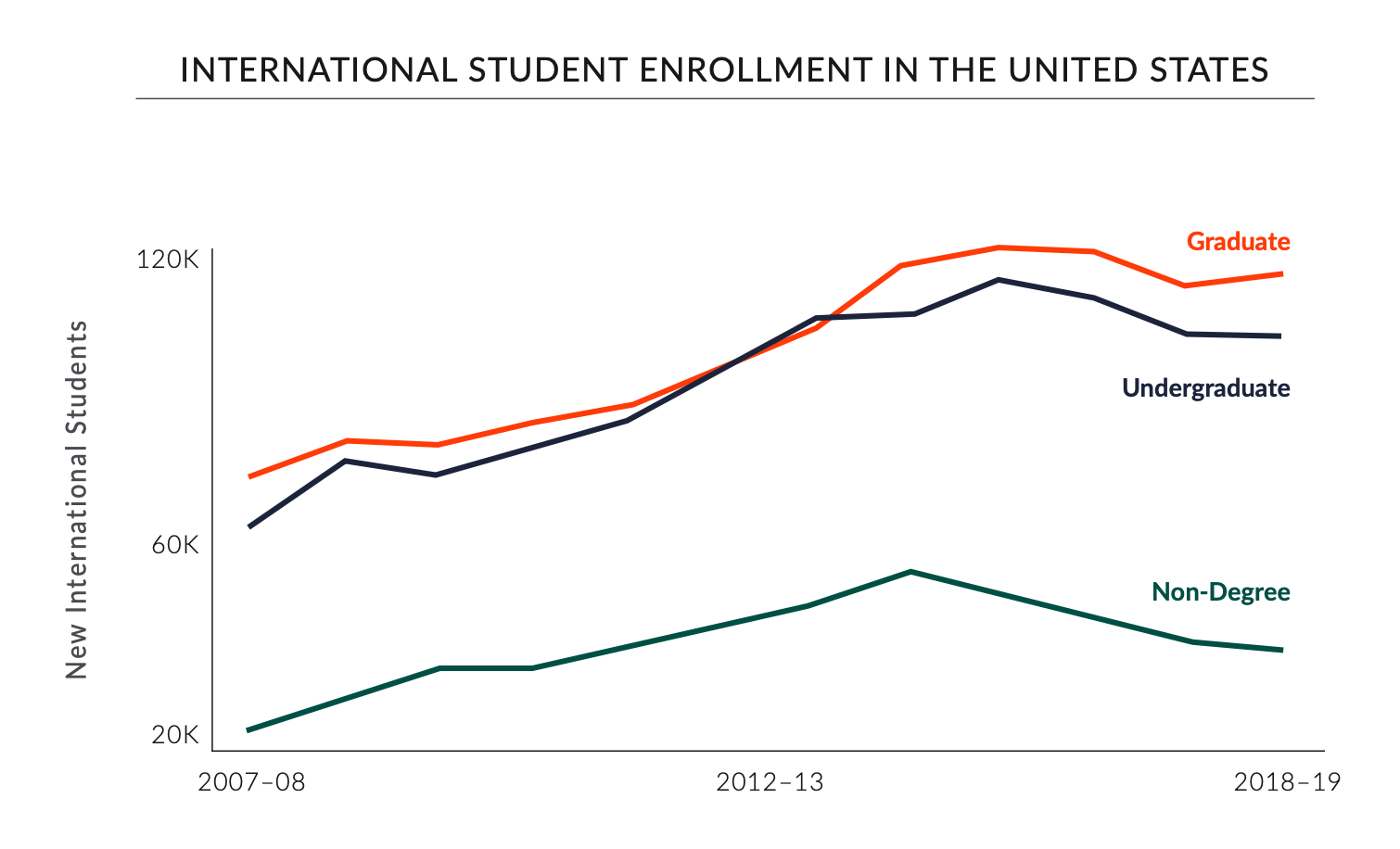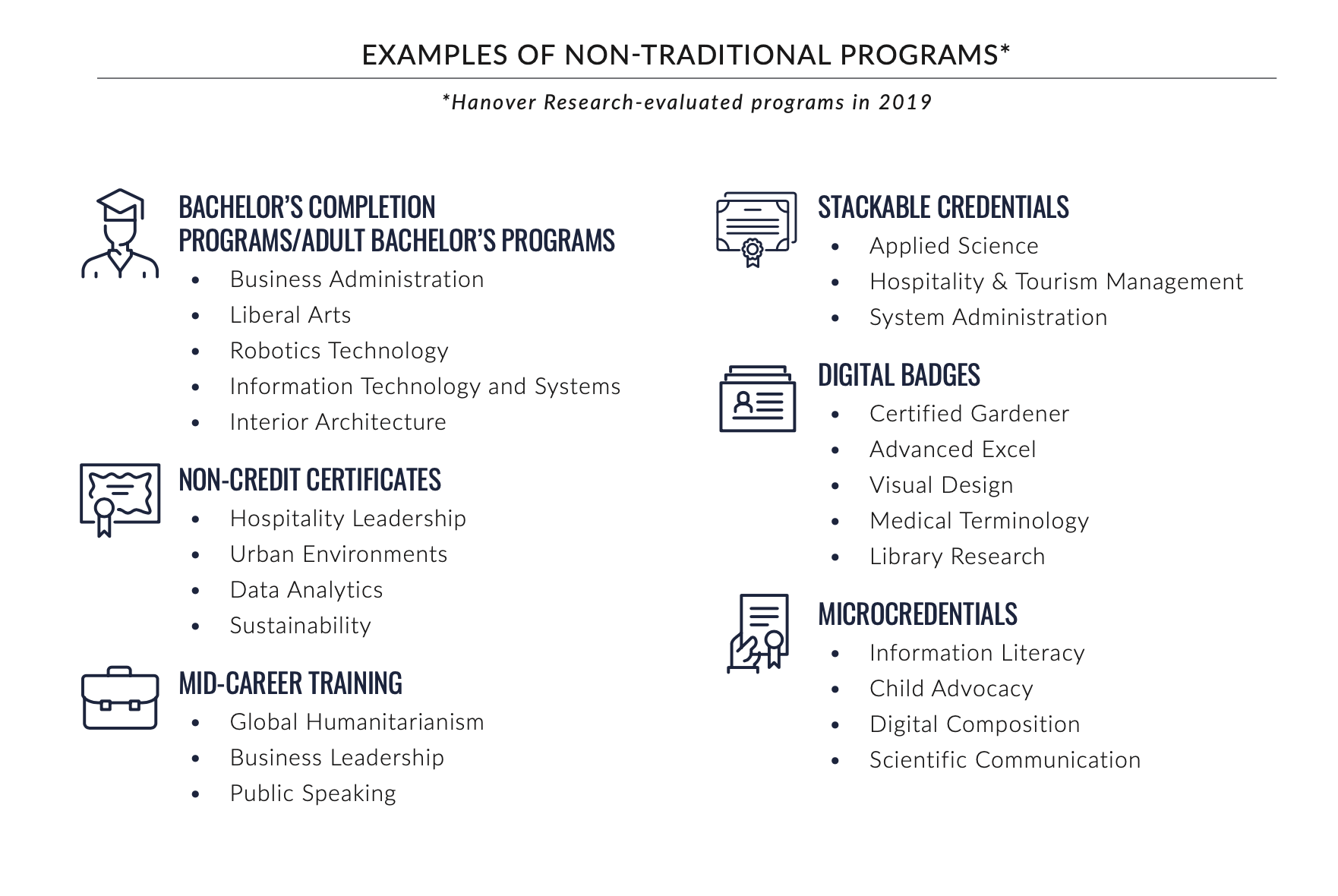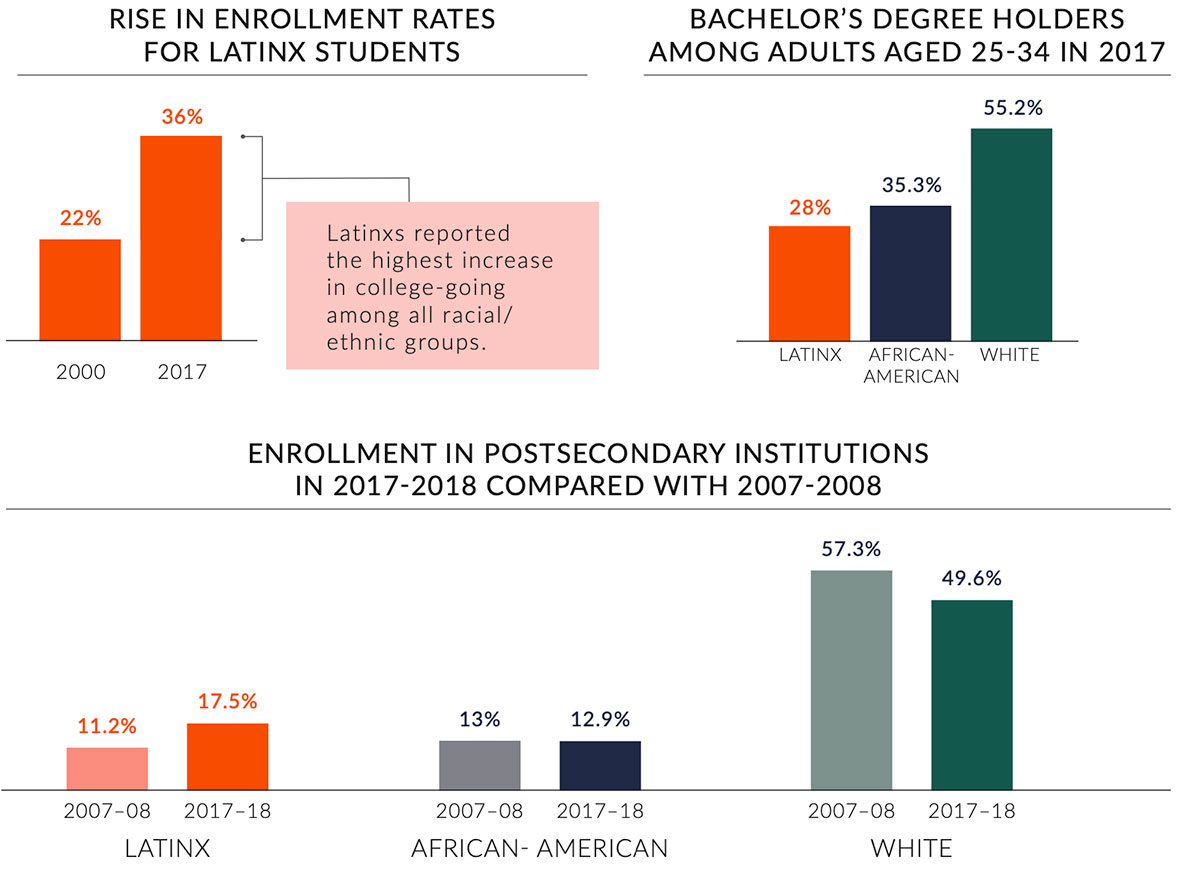2020年高等教育趋势
2020-11-22 08:11:44
INTRODUCTION

The world of higher education today is far different than the one of even five years ago. Institutions have seen enormous shifts concerning the face of the student population, the support services they require, the most effective strategies to engage and recruit them, and more. In this state of flux, many institutions are pursuing innovative strategies to thrive amid uncertain funding and to provide the support students need most.
Institutions are seeing a new student population—more adult and non-traditional learners are pursuing degrees, increasing the demand for flexible education models. At the same time, institutions are contending with a decrease in international students and an increase in underrepresented students who require distinct support services to attract them to campus and keep them enrolled through graduation. In order to keep their institutions thriving and well-known to prospective students and donors alike, colleges and universities are increasingly experimenting with their financial models and marketing strategies, changing the ways in which they have traditionally operated.
The 2020 TRENDS IN HIGHER EDUCATION report unpacks crucial shifts in higher education that are likely to affect most institutions—from domestic to international—and provides strategies to help them evolve. As they navigate these changes, institutions have the opportunity to establish themselves as leaders in higher education.
NEW TUITION TACTICS
REVITALIZE INTERNATIONAL
STUDENT RECRUITMENT

After decades of steady growth, enrollments of new international students in U.S. institutions are declining. In 2018–19, 1,095,299 international students enrolled as first-time undergraduates, a decline of 9.5% from 2014 –15. Non-United States markets are also seeing international enrollment decline or stagnation. The United Kingdom’s international enrollment has stayed largely flat, only rising 4.1% between 2012 –13 and 2016 –17, while New Zealand has seen a substantial decline in international enrollments in the vocational and technical education sector.
While some attribute the United States’ international student enrollment decline to the current administration’s stricter immigration policies, others believe that the primary factor is the heavy tuition that institutions force international students to pay. International students paid on average $26,290 for undergraduate tuition in 2018 –19—a 42% increase from a decade before. International students often do not receive the same benefits afforded to American students, such as financial aid assistance, that could ease the burden of high tuition. To avoid missing out on the additional revenue that international students bring, institutions are considering lowering the underlying cost of education for international students.

How Will Institutions Boost International
Student Enrollment in 2020?

1. Conduct Outreach to New International Markets: Institutions are increasingly pursuing diversification strategies in which they broaden recruitment outreach to emerging international markets. Countries with a rapidly expanding middle class or economy, such as Bangladesh and Ghana, are particularly promising. Additional emerging markets include Nepal and Kuwait.
2. Reduce Reliance on Oversaturated International
Markets: Many factors contributing to the decline in international student enrollment are out of institutions’ control: Some foreign governments, such as Brazil and Saudi Arabia, have reduced scholarships that previously sent significant numbers of students to the United States, while China’s efforts to improve its domestic university system have kept more students at home. Institutions are increasingly deprioritizing these oversaturated markets to save their efforts for markets that are more promising.
3. Provide Additional Visa and International
Support Services: While 60% of schools with declining international enrollment have cited social and political pressures in the United States as factors contributing to enrollment decline, the most frequently cited issue (by 83% of schools) is the visa application process or visa issues/delays. In response, institutions have established additional immigration- related legal services or student support services to help students navigate the process.
4. Foster Post-Study Work Opportunities: Research has found a strong positive correlation between the availability
of temporary post-study work opportunities and growth in international enrollment. Building relationships with employers that help streamline the path from graduation to a career may make institutions more attractive.
5. Develop Student Services That Acclimate
International Students to Campus: Offering support that focuses on the unique challenges international students face while studying in the United States—such as language barriers, culture shock, unfamiliarity with the American education system, and more—can help institutions develop a reputation for being particularly welcoming to students from abroad.
For example, the University of Maryland-College Park’s counseling center employs psychologists who speak a variety of languages, including Spanish, Mandarin, Cantonese, Hindi, and Gujarati, to make students feel understood and at ease.
NON-TRADITIONAL ACADEMIC PROGRAMS PREPARE
STUDENTS FOR THE WORKFORCE

With more students frustrated by the cost and time requirements of traditional degree programs, institutions are increasingly investing in strategies to identify and serve non-traditional undergraduate students. Such students can include adult learners, individuals with dependents, students attending classes part-time, or financially independent students. Higher education providers are developing offerings that present alternative education delivery models to appeal to these students’ unique responsibilities and academic goals. For example, universities may emphasize workplace skills through experiential learning opportunities and offer microcredentials that allow students to build the skills they need while avoiding the higher cost and time commitment of a full degree.

What Will Non-Traditional Academic
Programs Look Like in 2020?

Pursue Minimum Viable Product Program Development: These programs focus on employment skills and are financed by income share agreements. Many include guaranteed employment, apprenticeships (physical and digital), and placement programs. Institutions first train students in the cognitive and non-cognitive skills needed for entry-level positions, then focus on building practical technical skills, and finally help students find employment.
Invest in Career and Technical Programs: CTE programs are designed to prepare students for their future careers, often with hands-on vocational training. Many institutions are investing in high-quality CTE programs that can improve student engagement, graduation rates, and postsecondary earning potential. While considering CTE programs, institutions should analyze employment projections and conduct wage analyses to position graduates tosecure jobs.
Emphasize Competency-Based Degrees and Education: A 2019 survey suggests that 74% of institutions are in the process of adopting or are interested in adopting competency- based education programs. Competency-based education may
be a better fit for adult learners, who may be more interested in directly learning practical skills that have a direct application to the workforce. Via competency testing, students progress through courses at their own pace, and then demonstrate their proficiency.Consider Achievement Tracking Instead of Credit
Hours: Rather than relying on credit hours, institutions track achievements to focus on whether students have actually learned the material. Movements like the Association of American Colleges & Universities’ Valid Assessment of Learning in Undergraduate Education aim to deepen institutions’ ability to describe and measure proficiency in academic performance. Institutions incorporating achievement tracking set fixed learning outcomes and note if students are on track with their learning.
Offer Microcredentials in Focused Subject Areas: Microcredentials offer an opportunity for skill specialization and address a movement among employers to emphasize skills instead of formal degree attainment. These credentials typically consist of two to four college courses in a particular field. In 2017, 26% of institutions offered microcredentials, an increase from 13% in 2016.
Provide Work Experience Via Experiential Learning
Opportunities: Non-traditional students can benefit from work programs that allow them to gain experience remotely, achieving their goals while reducing the time commitment. Northeastern University’s Experiential Network allows students to remotely complete real projects for corporate sponsors, providing real-world experience for students unable to commit to an internship or traditional experiential learning opportunities.
STUDENT DIVERSITY
SERVICES SUPPORT THE RISE
OF UNDERREPRESENTED
STUDENTS

Higher education campuses are increasingly diverse, hosting students from vastly different cultural and socioeconomic backgrounds. Now, students of color comprise more than 45% of undergraduates, compared with less than 30% in 1996. Similarly, nearly one-third of all students are the first in their family to attend a higher education institution. Because these students face unique challenges in higher education, many institutions now provide services specifically tailored to help them succeed. As these students become more prominent on college campuses, higher education providers that are better equipped to address their needs will have an advantage in recruiting from traditionally under-tapped populations. To help underrepresented students find a home on campus, institutions are pursuing initiatives that help these students succeed academically and socially.

How Will Institutions Support
Underrepresented Students in 2020?

1. Engage Parents in Students’ Education: By involving parents in their children’s higher education, institutions
aim to increase first-generation and underrepresented student retention. For example, Elizabethtown College in Pennsylvania developed a 7-week interactive online video course for parents of freshmen, which covers the daily facets of campus life and how to interact with their children about common higher education challenges.
2. Help Students Meet Basic Financial Needs: Approximately 39% of undergraduates live below 130% of the federal poverty line. Institutions are developing services that help students meet their basic needs so that they can focus more on academics. For example, over 640 institutions now operate food pantries on campus.
3.Conduct Proactive Outreach to Underperforming
Students: Rather than expecting students to access campus resources on their own, institutions can track student performance and take the initiative in reaching out when students face challenges. Georgia State University’s “GPS Advising” system monitors student performance and notifies counselors if a student appears to be in trouble. As a result, Georgia State has turned itself into a leader among United States institutions for generating high academic achievement by populations that have often struggled at large, predominantly white institutions: this includes African- American students, lower-income students, and first- generation students.
4.Incorporate Peer Mentors Into the Support
Process: Effective peer mentors can help underrepresented students transition to college life and develop necessary academic and life skills. For example, Dickinson College’s new peer mentoring program is designed specifically for underrepresented students and integrates them into social events, while teaching them skills such as how to ask professors for help.
5. Support and Hire Faculty of Color: Prior studies have demonstrated that the number of faculty of color on campus is associated with increased persistence among students
of color. Faculty from diverse backgrounds help facilitate a culture of inclusion on campus, develop curriculum with a greater diversity of topics, and serve as effective mentors for underrepresented students.



